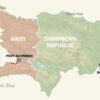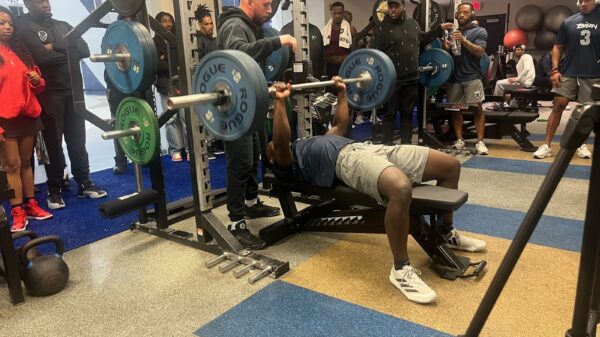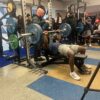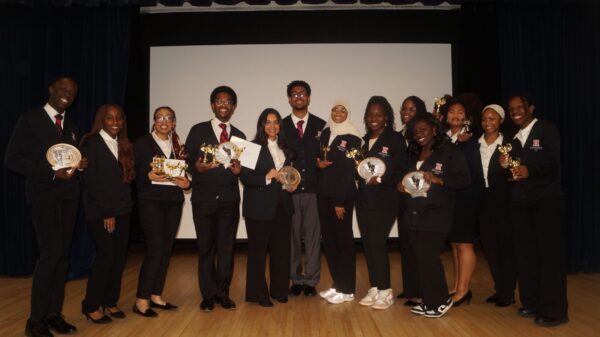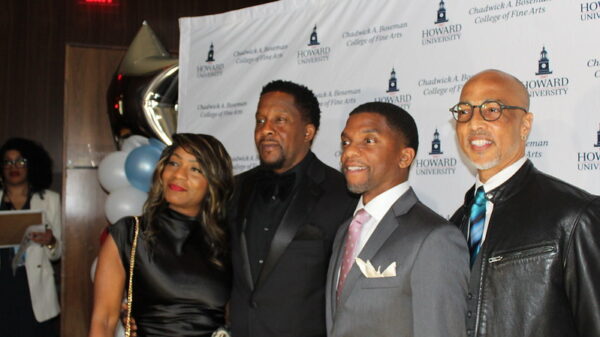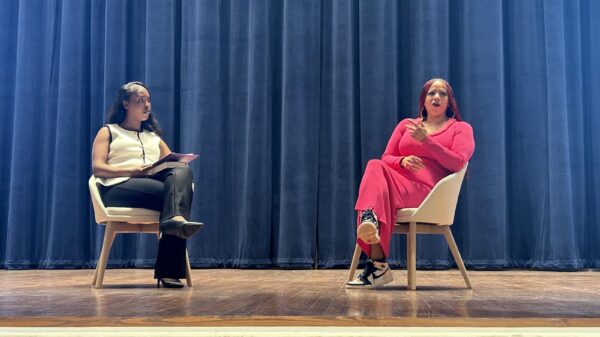By Bria Horsley, Contributing Writer
Posted 1:10 PM EST, Tues., Nov. 15, 2016
What began as a journey to locate an innovative approach to healing shortly became the hub of artistic relief that can be found in Washington D.C. today.
Smith Center for Healing and the Arts is a nonprofit health, education and arts organization dedicated to providing physical, emotional and mental healing through unconventional practices for people affected by cancer.
“The doctor is focused on curing the cancer and healing you from a medical standpoint. We want to heal you as an entire person,” said Deputy Director Michelle Clermont.
A part of Smith Center’s mission is to provide a safe space where participants can learn with others who are or have been in a similar position. The program calendar includes diverse healing outlets in the forms of movement, arts, nutrition, and education.
Whether the desire is to paint, write poetry or cook, there is something for everyone regardless of experience. These programs are not limited to any particular stage of cancer, with the Smith Center serving many people in the surrounding community.
In the lobby, The Joan Hisoaka Healing Arts Gallery features art that can either help instill healing or the artists, themselves, used their art to heal. This environment is facilitated by the staff, many of whom, are cancer survivors.
“I’m in charge of making sure we have a safe, comfortable, welcoming space that encourages return,” said Kara Garrett, who went from participant to full-time cancer support coordinator.
Not only is there patient support, but there is educational enrichment for caregivers and medical professionals. As a part of the Patient Provider Education Project, led by Wanda Lucas, it is a priority to dismantle stereotypes made among medical providers about African-American cancer patients in Wards 7 and 8.
With the intent of making a lasting impact through these workshops, programs are targeted at residents who are in the process of learning how to care for this demographic. In addition, the Smith Center has partnered with local churches to build rapport with the communities it seeks to help. Programs are also in place to cultivate Patient Navigators, people trained to work one-on-one with participants to guide them in self-care.
“Patient Navigators help coach the cancer experience at whatever point you’re coming in,” said Erin Price-Schabert, who handles navigation services. “You will have different questions and they meet you where you’re at. Through resources, they connect with you. They play the support role especially for those who don’t want to burden family members.”
Besides on-site programs, 3-day retreats take place at Kripalu Center in Stockbridge, Mass. Limiting each retreat’s attendance to nine participants, the intimate weekends are modeled to help newly diagnosed participants relieve stress. A group who attended this retreat more than 20 years ago, known as the Vikings, have continued to stay in touch with each other and support the Smith Center. There are also weeklong trainings for integrated cancer care teaching nutritionists and dietitians about culinary needs for cancer patients.
As for the future of Smith Center, they would like to see more diversity, programs, and hospital collaborations.
“Almost mimicking the staff, 90 percent of the participants are women,” said Clermont. “It’s easy to get men to come to a lecture or a workshop, but ongoing programs are harder to get them to stay around for.”
In the past, Smith Center worked with local hospitals to bring artistic healing directly to those living with cancer. Unfortunately, due to budget cuts, funding toward those programs were eliminated. Smith Center has the desire to bring this form of integrated care back into hospitals.
The Smith Center has a legacy of healing those living with cancer in a way that is necessary, but not typically addressed. Its mission is built around the progression and happiness of its participants, and it is not willing to compromise that.
“This place gives people the permission to choose the kid of life they want,” Lucas said. “Doctors want you to do certain things, while patients care about their quality of life.
“Many people want to not pursue treatment and are in the end of life phase and come here and are really happy.”







